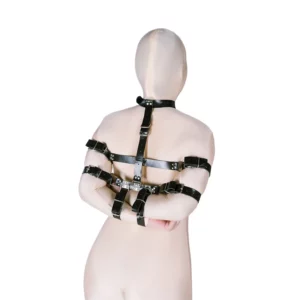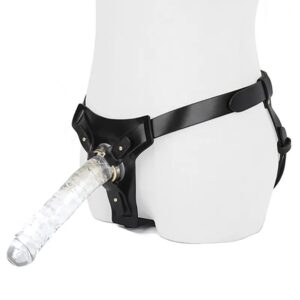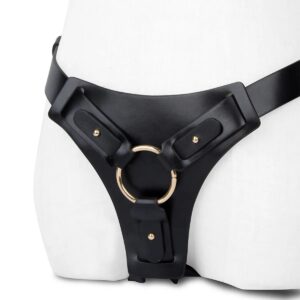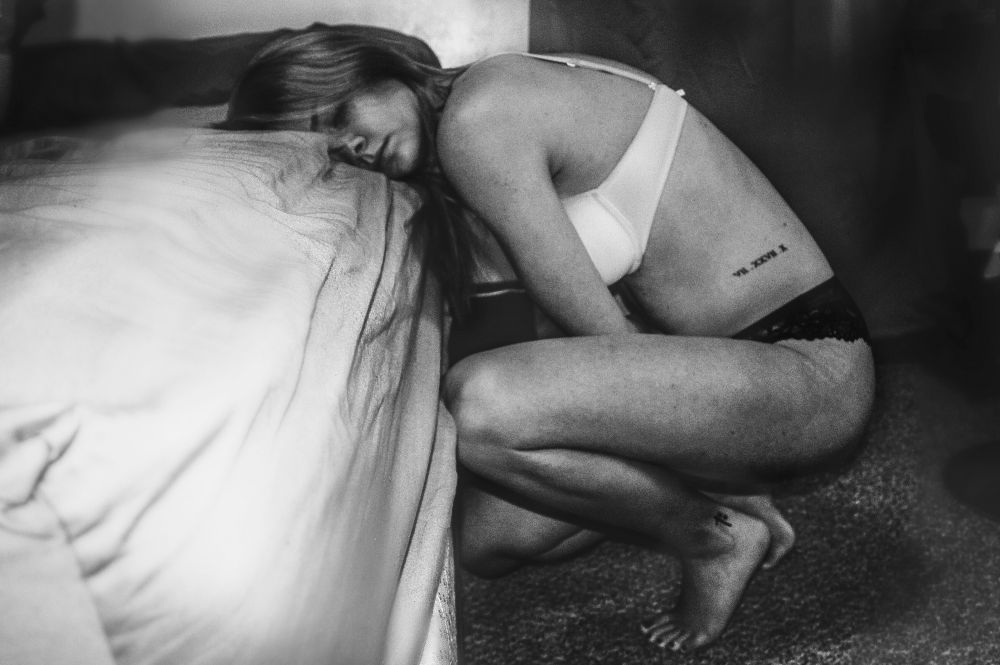“Sub drop” refers to a set of psychological and physical symptoms that can occur after a BDSM or power exchange scene. It affects the submissive partner, leading to feelings of vulnerability and emotional or physical distress. It is crucial for both partners to understand sub drop, its causes, and how to provide support during this challenging phase of BDSM play.
Contents
ToggleWhat Is Sub Drop?
Sub drop represents a complex and essential aspect of the lifestyle that impacts submissives after intense scenes or power exchange dynamics in BDSM. This experience isn’t limited to physical sensations but is profoundly psychological as well. Sub drop can manifest as a range of symptoms, including mood swings, anxiety, feelings of vulnerability, fatigue, or even depression. It typically occurs as the submissive partner transitions from an intense state of arousal and submission back to their everyday self. The abrupt change in hormone levels, emotional connection, and the intensity of the scene contributes to this phenomenon.

Do you want to show your kinky side in casual outfits? We got you covered! Visit msoulart.com and find our Visit chokers, harnesses, and bodystockings. Now, let’s get back to reading
What Does Sub Drop Look Like?
Sub drop manifests differently in individuals, but there are common signs and symptoms to look for in submissives after BDSM activities:
Mood Swings: Submissives may experience rapid shifts in mood, going from euphoria to sadness or irritability.
Anxiety: Feelings of anxiousness and restlessness can be prevalent.
Vulnerability: Submissives might feel emotionally exposed and vulnerable, which can lead to needing reassurance and comfort.
Fatigue: Physical exhaustion and tiredness are common during sub drop.
Physical Symptoms: Headaches, nausea, or muscle soreness can occur.
Depression: In more severe cases, submissives may experience feelings of depression, sadness, or emptiness.
Emotional Sensitivity: Submissives may become extremely sensitive to emotional stimuli.
Withdrawal: Some individuals may withdraw from social interactions and become more introverted.
Insecurity: Feelings of doubt or insecurity about the BDSM relationship can emerge.
What Does Subdrop Feel Like?
Subdrop can feel different for each submissive, there are common emotional and physical sensations associated with subdrop.
Emotional Vulnerability: Feelings of insecurity and the need for comfort and reassurance.
Mood Swings: Rapid changes in mood, such as going from euphoria to sadness or irritability, are common during sub drop.
Physical Exhaustion: Feeling physically drained, exhausted, or fatigued.
Anxiety: Feelings of anxiety, restlessness, or nervousness can surface, making it challenging to relax.
Physical Discomfort: Subdrop can manifest as physical symptoms like headaches, nausea, muscle soreness, or fatigue.
Sensitivity: Submissives may become emotionally hypersensitive, making them more receptive to both positive and negative emotional stimuli.
Depression: In some cases, temporary feelings of depression, sadness, or emptiness.
Withdrawal: Submissives may withdraw from social interactions and become more introverted.
Loss of Interest: Lose interest in BDSM desires and activities temporarily.
Insecurity: Feelings of self-doubt or insecurity about the BDSM relationship can arise.
It’s crucial for both partners to recognize these signs and be prepared to provide the necessary aftercare and emotional support. Understanding and communicating openly about these experiences can foster trust and intimacy in the BDSM dynamic and help submissives navigate sub drop more comfortably.

Why Does Sub Drop Happen? How Does Sub Drop Work?
Subdrop occurs in BDSM dynamics and is primarily associated with submissives. It happens for several interconnected reasons, and understanding how subdrop works is essential for fostering a safe and fulfilling BDSM experience.
Hormonal Release: During BDSM scenes, the body releases various hormones, including endorphins and adrenaline. These hormones create a natural high and numb pain, allowing the submissive to endure intense sensations. After the scene ends, the hormonal balance shifts, leading to a low or crash in mood.
Intense Emotional Experience: BDSM scenes often involve intense emotions, which can range from pleasure and ecstasy to pain and fear. After the scene, the submissive may experience a stark emotional contrast, which can lead to feelings of vulnerability and sadness.
Physical and Emotional Release: BDSM provides an outlet for submissives to release pent-up physical and emotional tension. After the scene, they may feel a void, akin to coming down from an emotional peak.
Endorphin Withdrawal: Endorphins, often referred to as “feel-good” hormones, are released during BDSM activities. After the scene, a decrease in endorphins can result in mood swings and fatigue.
Emotional Intensity: The depth of trust, intimacy, and vulnerability in BDSM relationships can lead to powerful emotional connections. When these scenes end, submissives may experience a sense of loss or missing their partner’s emotional presence.
Lack of Aftercare: The absence of proper aftercare, which includes emotional support, reassurance, and physical comfort, can intensify subdrop. Aftercare is a crucial component in helping submissives ease the transition from a scene to their regular state.
For Sub: How to Deal With Sub Drop
Dealing with subdrop is essential for maintaining a healthy and fulfilling BDSM dynamic.
Recognize and Acknowledge: The first step is recognizing the signs and acknowledging that subdrop is a natural part of the BDSM experience. Open communication between the submissive and the dominant is crucial.
Aftercare: Adequate aftercare is one of the most effective ways to prevent or manage sub drop. After a BDSM scene, dominants should provide emotional support, physical comfort, and reassurance. Cuddling, talking, or simply being present can significantly help the submissive’s emotional well-being.
Self-Care: Submissives can practice self-care techniques to manage subdrop. This might include taking a warm bath, engaging in relaxation exercises, listening to soothing music, or spending time with a pet. Self-care is an important way to soothe emotional distress.
Hydration and Nutrition: Ensuring that the submissive is well-hydrated and has consumed proper nutrition can help mitigate the physical effects of sub drop, such as fatigue and headaches.
Time and Space: Submissives should allow themselves time and space to process their feelings. This may involve temporarily distancing themselves from the BDSM dynamic, if needed.
Maintain Open Communication: Effective communication is essential. Submissives should feel comfortable discussing their feelings with their dominants and expressing their needs and boundaries.
Seek Professional Help: In severe cases where subdrop is affecting the submissive’s mental health, seeking professional therapy or counseling can be beneficial. A therapist experienced in BDSM dynamics can offer guidance.

For Dom: How Can I Support My Partner Experiencing Sub Drop?
Supporting a partner experiencing subdrop in the BDSM context is essential for maintaining a healthy and fulfilling dynamic.
Open Communication: Maintain open and non-judgmental communication. Encourage your partner to express their feelings, thoughts, and needs. Be a good listener and create a safe space for them to share.
Aftercare: Provide thorough aftercare after BDSM scenes. Aftercare involves physical comfort, emotional reassurance, and cuddling. Be attentive to your partner’s physical and emotional needs. Ensure they feel safe and cared for.
Physical Comfort: Offer physical comfort, such as warmth, blankets, soothing massages, or a warm bath. This can help your partner relax and recover from the physical and emotional intensity of a scene.
Reassurance: Offer verbal reassurance and positive affirmations. Let your partner know that they are valued, cherished, and that you care for their well-being. Reassure them that their feelings are normal and valid.
Cuddle and Connection: Cuddling and physical closeness can provide a sense of security and connection. Spend quality time together, hold each other, and engage in non-sexual intimacy.
Hydration and Nutrition: Ensure your partner is hydrated and has consumed proper nutrition. Sub drop can sometimes lead to fatigue, dehydration, or headaches, which can be alleviated with adequate care.
Empathetic Understanding: Be empathetic and understanding of your partner’s emotional state. Avoid minimizing or dismissing their feelings. Recognize that sub drop is a natural part of BDSM and that it may affect individuals differently.
Consistency: Be consistent in providing emotional support, not only immediately after a scene but throughout your BDSM dynamic. Checking in with your partner regularly can prevent sub drop or address it before it intensifies.
Respect Boundaries: Be mindful of your partner’s boundaries and limits. Avoid pushing your partner beyond what they can handle and respect their consent and boundaries at all times.
Adapt and Learn: Keep learning about BDSM dynamics and understand that each individual’s needs and experiences are unique. Be willing to adapt your practices and routines to better support your partner.
Seek Professional Help: If sub drop becomes severe and negatively impacts your partner’s mental health or well-being, encourage them to seek professional help. A therapist experienced in BDSM dynamics can provide guidance and support.
Remember that providing emotional support to a partner experiencing sub drop can strengthen the bond between you and create a more fulfilling BDSM dynamic. By prioritizing your partner’s well-being, you demonstrate care and respect for their physical and emotional safety.
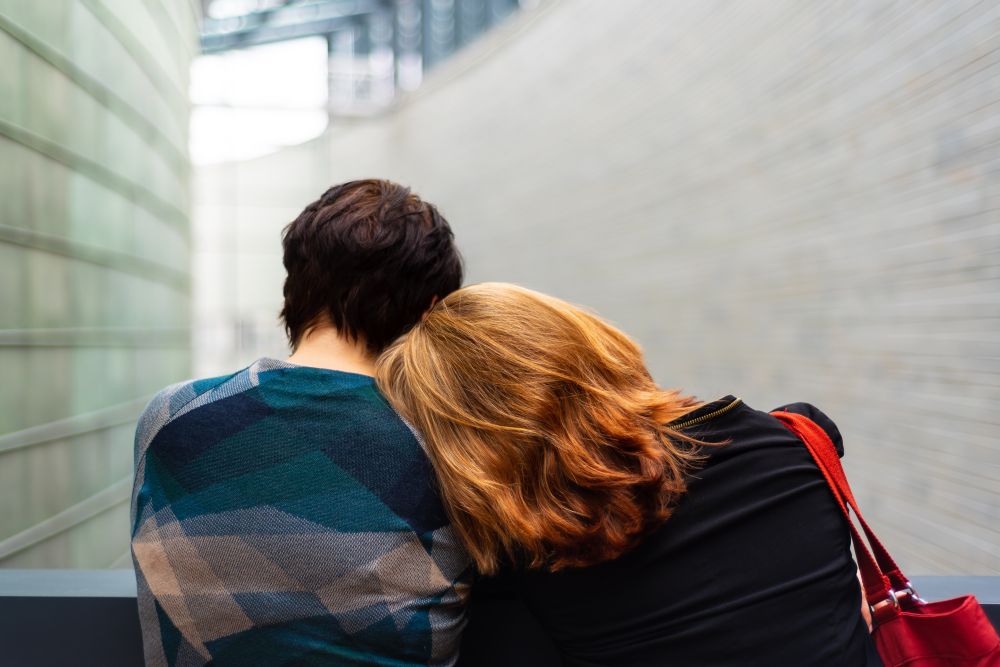
How to Prevent Sub Drop?
Preventing subdrop, or minimizing its effects, is essential for a safe and positive BDSM experience. Here are some tips to help prevent sub drop:
Negotiation: Before a scene, engage in a negotiation phase where both partners discuss your expectations, boundaries, safe words, and aftercare plans. This sets the stage for a consensual and safe experience.
Aftercare: Engage in thorough aftercare after each BDSM scene. Aftercare involves physical comfort, emotional reassurance, and cuddling. It can significantly reduce the chances of sub drop.
Gradual Intensity: Gradually increase the intensity of BDSM activities as you become more experienced and comfortable. Avoid jumping into highly intense scenes without proper preparation.
Safe Words: Establish and use safe words to ensure clear and immediate communication during a scene. This helps prevent accidental or unwanted distress.
Regular Check-Ins: During a scene, engage in regular check-ins to assess each other’s comfort and well-being. Adjust the intensity or activity based on the feedback received.
Emotional Preparation: Mentally and emotionally prepare yourself for BDSM activities. Reflect on your feelings and emotions, and be aware of potential triggers.
Stay Hydrated and Nourished: Ensure you are adequately hydrated and have consumed proper nutrition before engaging in BDSM activities. Dehydration or low energy levels can exacerbate sub drop.
Meditation and Breathing: Practice mindfulness meditation or deep breathing exercises to help manage stress and anxiety during BDSM scenes.
Understanding Your Limits: Be aware of your physical and emotional limits, and communicate them to your partner. Avoid pushing yourself beyond what you can handle.
FAQS
Is Sub Drop a Real Thing?
Yes, sub drop is a real and well-documented phenomenon in BDSM. Sub drop refers to the emotional and physical aftereffects that submissives or bottoms may experience after engaging in BDSM activities. These effects can include a range of emotions, such as sadness, anxiety, vulnerability, or even physical symptoms like fatigue, muscle soreness, and exhaustion.
Is Sub Drop Normal?
Yes, sub drop is considered a normal and common occurrence in BDSM. It’s a well-recognized phenomenon that can affect submissives or bottoms after engaging in BDSM activities.Sub drop is normal because it often involves a mix of physical and emotional responses to intense experiences. These responses can include feelings of vulnerability, anxiety, sadness, or fatigue.
Are All Submissives Prone to Sub Drop?
Not all submissives are prone to experiencing sub drop, and the likelihood of experiencing it can vary widely from person to person. Sub drops is a common phenomenon in BDSM, but it’s not a guarantee for every submissive or bottom in every scene.
What Triggers Sub Drop?
Sub drops can be triggered by a variety of factors, and it can vary from person to person. Some common triggers for sub drops in BDSM scenarios include Endorphin Drop, Pain and Physical Stress, Emotional Intensity, Lack of Aftercare, Preexisting Stress or Emotional State etc.
Am I Going Through Sub Drop?
Experiencing sub drop is a personal and subjective matter. It’s possible that you might be going through sub drop if you’ve recently engaged in BDSM activities, and you’re feeling a significant shift in your emotional or physical state. Sub drop can manifest in various ways, including feelings of sadness, anxiety, physical exhaustion, or even a sense of emotional vulnerability.
Does Sub Drop Indicate a Problem in the BDSM Relationship?
Experiencing sub drops in a BDSM relationship does not necessarily indicate a problem within the relationship. Sub drop is a common and natural emotional response that can occur after intense BDSM activities, particularly if they involve elements of power exchange, pain, or strong emotional connections. Sub drop is essentially a temporary emotional or physical low that some submissives may experience.
Why It Happens More in Committed Relationships
In committed relationships, there’s often a deeper emotional connection between partners. When BDSM activities involve elements of trust, vulnerability, or intense power exchange, the emotional investment can be higher, potentially intensifying the experience and the potential for sub drop. In established, committed relationships, submissives may feel more comfortable and secure in expressing desires and boundaries. This comfort can lead to the exploration of more intense BDSM activities that have a higher likelihood of triggering sub drop.

How Long Does Sub Drop Typically Last?
The duration of sub drops can vary significantly from person to person and even from one episode to another. There’s no fixed timeframe for how long sub drop lasts, as it depends on various factors, including the individual, the intensity of the BDSM experience, and the aftercare provided.
Can Sub Drop Be Prevented?
Sub drop can’t be completely prevented, as it is a natural and sometimes unpredictable response to intense BDSM activities. Effective negotiation before engaging in BDSM activities is crucial. Clearly discuss limits, boundaries, expectations, and potential emotional responses. This open communication can help identify and avoid triggers that may lead to sub drop. Adhere to the principles of SSC or RACK (Risk-Aware Consensual Kink) to ensure the activities are as safe as possible. Minimizing physical harm and emotional distress can reduce the likelihood of sub drop. Implement a structured aftercare routine that includes physical and emotional support. Aftercare can involve cuddling, reassurance, providing warmth, and talking about the scene. It’s crucial for both partners to understand the importance of aftercare and provide it consistently.
When Should I Seek Professional Help for Sub Drop?
It’s crucial to prioritize your mental and emotional well-being and seek help when needed.
If sub drop symptoms, such as depression, anxiety, or mood disturbances, persist for an extended period, it may be time to consult a mental health professional.
If you find it challenging to cope with the emotional aftermath of BDSM activities, despite trying self-care and communication with your partner, professional help can provide additional coping strategies.
Recurring Sub Drop: If you experience sub drop frequently and it begins to affect your overall well-being or your ability to enjoy BDSM, therapy can help address the underlying causes.
If you engage in self-harm or have suicidal thoughts as a result of sub drop, immediate professional help is essential. Contact a mental health crisis hotline or a therapist right away.
A therapist experienced in BDSM and kink dynamics can provide support and guidance in a non-judgmental environment. They can help you explore the underlying causes of sub drop, develop coping strategies, and work towards a healthier and more fulfilling BDSM experience.

Can Doms Get a Sub Drop?
Yes, dominants (or “doms”) can experience something akin to sub drop, although it’s often referred to as “dom drop” or “top drop.” While sub drop typically occurs in submissives after intense BDSM scenes, dom drop can happen to dominants after engaging in demanding or emotionally intense BDSM activities. Like sub drop, dom drop can manifest as physical and emotional symptoms, including fatigue, mood swings, feelings of guilt, or a sense of emptiness.

